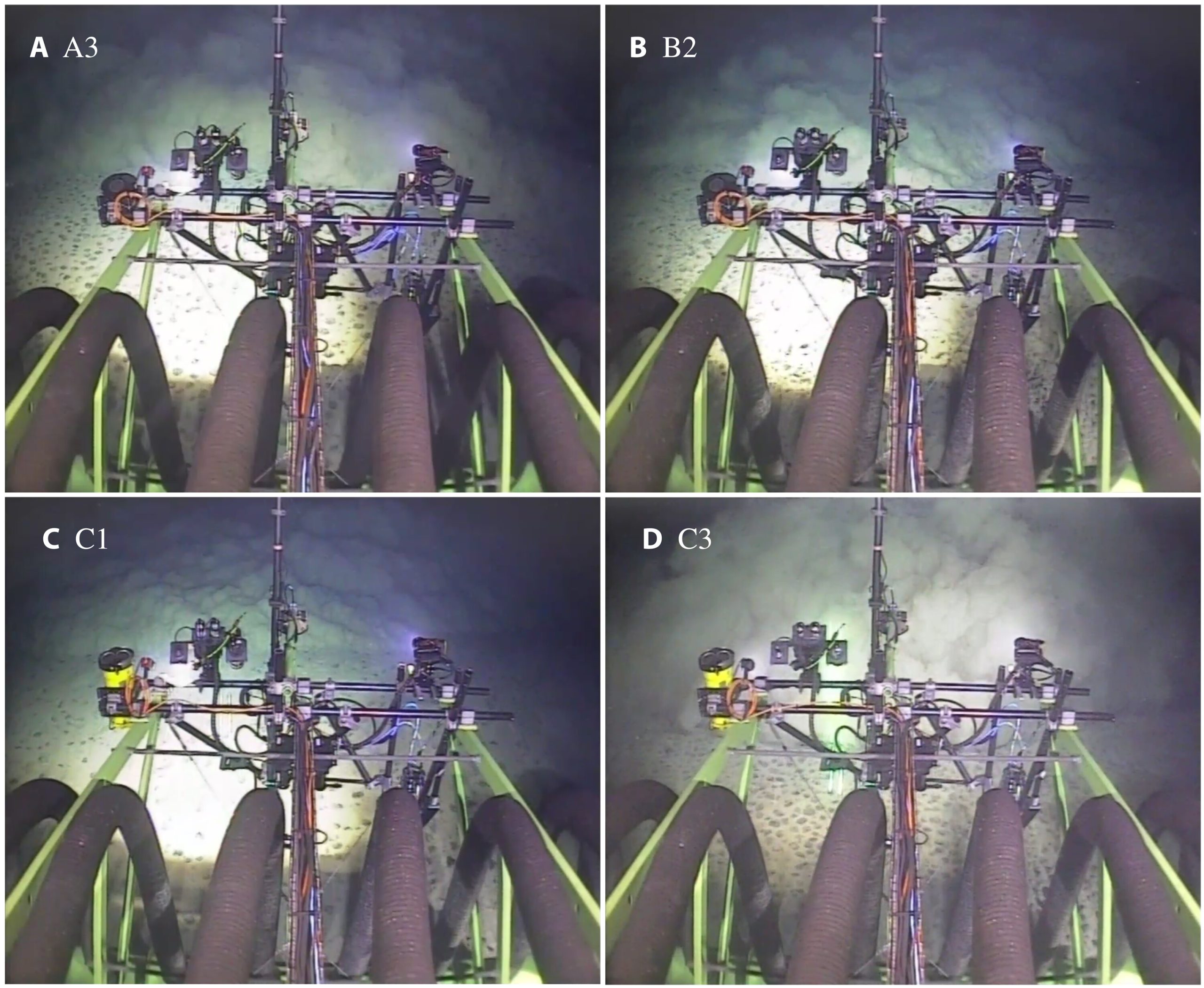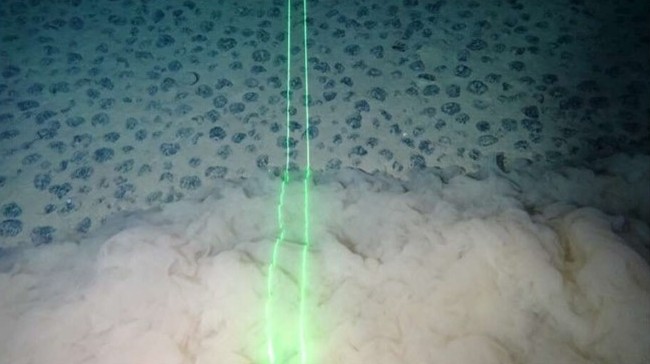Sediment is a mixture of minerals and material that covers the deep seafloor. When polymetallic nodules are collected by remotely controlled collectors, the sediment on which they lie is disturbed. This creates a cloud of particles known as a sediment plume. It has been claimed that these plumes could travel thousands of kilometers, affecting marine life over a very wide area.
Once they have been collected from the seafloor beneath the deep ocean, nodules are transported to a surface vessel via a pipe. As you would expect, some sediment and seawater also travel up the pipe. This is separated from the nodules and returned to the deep ocean. All known operations plan to release this sediment and seawater at depths of 2,000 meters or below. Again, the concern is that the returned sediment might travel over very long distances.
Will these sediment plumes travel over thousands of kilometers?
The concerns that have been raised are based on simulations and models that were created without any in-field data from technology trials and, hence, relied upon a number of assumptions. What we now have is real-life data from ultra-deepwater technology trials conducted at sea.
What these trials show is that the majority of the sediment disturbed during polymetallic nodule collection settles within 1.5 to 2 kilometers, with the majority settling within a few hundred meters.
Regarding sediment returned to the deep ocean from surface vessels, the findings show that sediment particles rapidly diluted to near background levels.

The published science
A peer-reviewed scientific paper by the world-leading scientific teams at the Massachusetts Institute of Technology (MIT) and Scripps Institution of Oceanography (SIO) on sediment plume monitoring was published in the journal, Science Advances, in September 2022.
MIT and SIO worked on designing and implementing a monitoring program for Global Sea Mineral Resources’ (GSR’s) prototype seafloor nodule collector trial. The trial took place in the Clarion Clipperton Zone of the Pacific Ocean in early 2021, in ultra-deepwater at a depth of 4,500 meters.
The study showed that the plume created was low-lying. For the test areas studied, which have shallow slopes, 92-98% of the sediment settled locally or was in suspension below 2 meters above the deep seafloor, with concentrations in the order of a few milligrams per liter (mg/l) – akin to a single grain of sand in a fishbowl.
“This is the first time a clear picture of these sediment plumes has been established and characterized, addressing some of the uncertainty and misconceptions in current understanding.”
– Professor Thomas Peacock, MIT
In addition, environmental monitoring using cameras on Autonomous Underwater Vehicles revealed that visible elements of the sediment plume that travelled beyond the mining area, primarily moved in one direction, and almost all sediment had re-settled within 1.5 to 2 kilometers of the test site, with the majority settling within a few hundred meters.
A peer-reviewed scientific paper by MiningImpact scientists who independently monitored GSR’s trial showed a gravity current forming downslope, transporting the suspended sediment up to 500 meters away from the source. Rapid sediment redeposition occurred, largely within a limited area.
Driven by the bottom currents, a small fraction of the sediment stayed in suspension and the authors note that beyond 1700 meters, it became increasingly difficult to distinguish the top of the sediment plume from overlying clear water. Measurements taken 48 hours after the trial at 4.5 kilometers from the trial site showed the sediment concentration had diluted to 0.1 milligrams per liter (mg/l). Visually, at 0.1 mg/l, the water would appear completely clear.

Sediment redeposition map from the entire study area and example images of the seafloor at different distances from the GSR trial site.
A 2022 mining trial by Nauru Ocean Resources Inc. (NORI), conducted on a flat part of the deep seafloor, supported the findings of the GSR trial. The sediment flow was shown to follow the contours of the seafloor and most sediment had settled out between five hundred meters and one kilometer from the test site.
Scientists returned to the NORI and GSR trial sites, 12- and 18-months after the trials, respectively. The analysis of this longer-term monitoring work is ongoing, and updates will be provided once the data has been collated and results become available from the scientific teams involved.
A thorough understanding of the initial form of sediment plumes created during nodule collection operations will provide a good foundation for designing equipment and approaches to commercial nodule collection that minimize and mitigate environmental impacts and effects as far as possible.
Return water discharges
In 2018, a research team including scientists from the Massachusetts Institute of Technology (MIT) and Scripps Institution of Oceanography (SIO), conducted a trial off the coast of California that transformed our understanding of what can be expected from return water discharge operations.
The trial simulated plumes generated by water and sediment discharged from a surface vessel to midwater. The findings from the study showed that sediment particles rapidly diluted to near background levels.
Researchers showed that for a deep seafloor mining operation, 10 cubic kilometers per year is expected to be impacted by return water plumes, accounting for fluid that may surpass threshold values even just for an instant. That is compared to a volume of the CCZ which is 18,000,000 cubic kilometers. This conservative approach suggests 0.00005% of the CCZ volume water could be impacted by one operation in a year. What’s more, given the associated technology is continuously improving, it is likely that pelagic sediment plumes can be reduced even further.
In 2022, Nauru Ocean Resources Inc. (NORI) conducted a mining trial that included a dewatering plant discharge to the midwater column. The analyses are underway, and updates will be provided once the data has been collated and results become available from the scientific teams involved.

